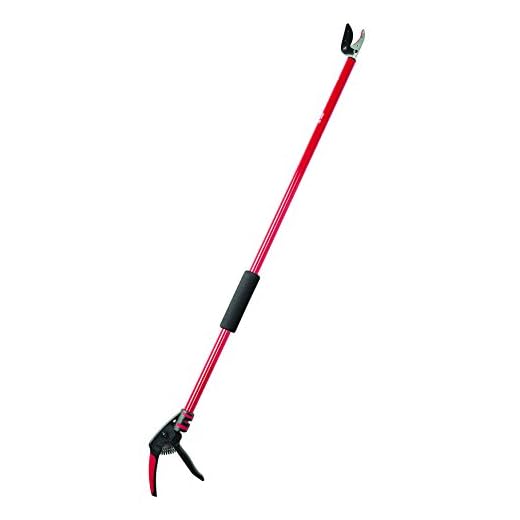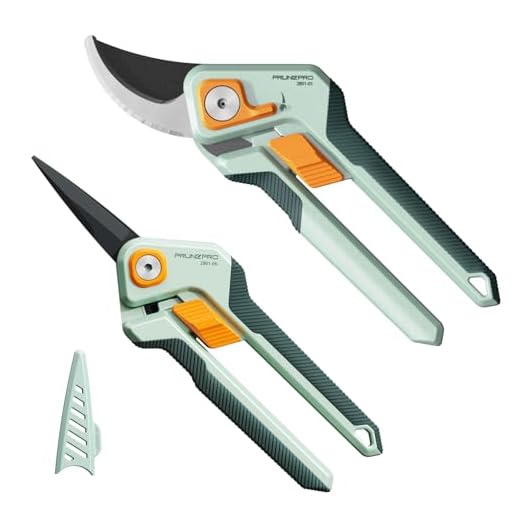




The ideal season for trimming your Schefflera is during the late winter or early spring, just before new growth begins. This timing allows the plant to recover quickly and encourages a healthy, bushy appearance. In this article, I will provide detailed insight into the best practices for maintaining your Schefflera, ensuring it thrives in your indoor space.
This guide is perfect for both novice and experienced plant enthusiasts looking to enhance the health and aesthetics of their indoor greenery. You will find practical tips on how to identify the right time for maintenance, what tools to use, and the specific techniques that promote growth.
Expect to learn about the signs that indicate your Schefflera needs attention, as well as the benefits of regular upkeep. With the right approach, you can ensure your plant remains lush and attractive throughout the year. Let’s get started on creating the perfect environment for your Schefflera!
Optimal Period for Trimming Umbrella Plants
For best results, conduct trimming of umbrella plants during the late winter or early spring. This timing allows the plant to recover and promote new growth as the growing season begins. Avoid trimming during the fall, as it can lead to stress and vulnerability to cold temperatures.
Monitor the local climate and specific conditions of your environment. If the risk of frost has passed, proceed with the maintenance. This ensures that the umbrella plant will thrive and maintain its health throughout the warmer months.
Techniques for Effective Trimming
Employ the following techniques to achieve optimal results:
- Clean Tools: Always use sterilized tools to prevent disease transmission.
- Remove Dead Growth: Focus on cutting away any dead or damaged branches to encourage healthy growth.
- Shape the Plant: Trim to maintain the desired shape and size, ensuring balanced growth.
- Avoid Over-Pruning: Retain enough foliage for photosynthesis; remove no more than one-third of the plant at a time.
Always observe the plant’s response after trimming and adjust future maintenance accordingly. This helps in fostering a robust and healthy growth pattern for the umbrella plant.
Understanding the Growth Cycle of Umbrella Trees
For optimal health, the growth pattern of these plants should be closely monitored. Generally, they exhibit significant growth during the warmer months, making this period crucial for their development. Understanding their life stages allows for more informed care practices.
These plants begin their annual cycle with a burst of new growth in spring, as temperatures rise and sunlight increases. During this phase, foliage becomes lush and vibrant, indicating that the plant is actively photosynthesizing and establishing new branches. As summer progresses, the growth may slow, but maintenance of adequate moisture and nutrients remains essential.
Growth Phases
- Spring: Active growth with new leaf development.
- Summer: Slower growth; focus on hydration and feeding.
- Fall: Preparation for dormancy; reduce watering.
- Winter: Dormant phase; minimal care needed.
Recognizing these phases can help in planning care tasks like trimming or feeding. During the active growth period, the plant can recover quickly from any trimming, while in dormancy, such actions may hinder recovery. Careful observation will lead to healthier plants and more successful management.
Seasonal Considerations for Effective Pruning
Pruning during the late winter or early spring is ideal for most species, as this timing encourages healthy growth. At this stage, the plant is still dormant, and cutting back can stimulate new development without risking damage to active growth. Additionally, it is easier to see the structure of the plant without leaves, allowing for informed decision-making regarding which branches to remove.
In contrast, pruning in the fall can be detrimental. The plant is preparing for dormancy, and any cuts made during this period can expose it to harsh winter conditions. This may lead to increased vulnerability to disease or pest infestations. Therefore, timing is crucial for maintaining the health and aesthetics of the plant.
Understanding Seasonal Growth Patterns
Different climatic conditions influence how a plant responds to pruning. In warmer regions, growth may be more active throughout the year, permitting additional pruning opportunities. However, in colder climates, limiting cuts to late winter or early spring is generally advisable.
- Winter: Best for structural cuts, as the plant is dormant.
- Spring: Encourages new growth; ideal for shaping.
- Summer: Light trimming can be done to maintain shape, but avoid heavy cuts.
- Fall: Generally not recommended; focus on preparation for winter.
Monitoring the plant’s health throughout the seasons also plays a significant role. If the plant exhibits signs of stress or disease, it may require immediate attention, regardless of the season. Always ensure tools are clean and sharp to minimize damage during cuts.
Optimal Timing: When to Avoid Pruning
Pruning should be avoided during the late summer and early fall months. This is a period when the plant is preparing for dormancy, and cutting back branches can disrupt its natural cycle. Any wounds inflicted during this time may not heal properly, leading to increased vulnerability to pests and diseases.
Additionally, pruning during the winter can also be detrimental. Although some may think that cutting back during dormancy is beneficial, it can expose the plant to cold temperatures and frost damage. It is advisable to wait until the risk of extreme weather has passed before making any cuts.
Key Periods to Avoid
- Late summer: Disrupts dormancy preparation.
- Early fall: Increases risk of disease and pests.
- Winter: Exposes to frost damage.
Understanding these critical periods will help maintain the health and vigor of your plant, ensuring it thrives throughout the seasons.
Signs Indicating the Right Moment for Trimming
Observing the health and growth patterns of your plant is key to determining the appropriate moment for maintenance. Specific indicators can signal that it is time to take action, ensuring your plant remains healthy and aesthetically pleasing.
One clear sign is the appearance of excessive growth. When branches become overly dense or unruly, they can obstruct light from reaching the inner parts of the foliage. This can lead to stunted growth and increased vulnerability to pests. Monitoring the overall shape and density can help identify when thinning is necessary.
Visual Cues to Watch For
- Yellowing Leaves: If leaves begin to yellow or drop prematurely, it may indicate stress or disease, suggesting that a trim could rejuvenate the plant.
- Overlapping Branches: When branches start to cross each other or crowd the center, it’s a sign that some may need to be removed to promote better airflow.
- Dead or Damaged Growth: Regularly inspect for any dead or broken branches that can detract from the plant’s overall health and should be removed promptly.
Temperature changes also play a role. Typically, trimming during the plant’s dormant phase, often in late winter or early spring, is advisable. This reduces the stress on the plant and allows it to focus on new growth once the warmer months arrive.
Lastly, observe seasonal growth patterns. If you notice vigorous new growth in the spring, it may be beneficial to trim back any overly long branches to encourage a fuller shape as the plant continues to develop.
Impact of Weather Conditions on Pruning Schedule
Conducting maintenance on your plant during suitable weather conditions significantly enhances its health and growth potential. Optimal periods include mild temperatures with low humidity, as these factors minimize stress on the plant and facilitate healing.
Cold temperatures can stunt growth and create challenges for recovery post-trim. Conversely, high humidity may lead to infections or disease. Monitoring weather forecasts is essential for determining the right moments for maintenance activities.
Key Weather Factors to Consider
- Temperature: Aim for mild days, ideally between 60°F and 75°F.
- Humidity: Low humidity levels reduce the risk of fungal infections.
- Precipitation: Avoid pruning immediately before rain to prevent stress on exposed areas.
- Wind: Calm days are preferable to prevent damage and ensure safety during the process.
By paying attention to these weather conditions, you can ensure that your plant thrives and flourishes after maintenance.
Best time to prune umbrella tree
Features
| Part Number | GT-3P |
| Model | GT-3P |
| Color | Green & Red & Black |
Features
| Part Number | POS-001-11 |
| Model | POS-001-11 |
| Color | Black |
| Size | 14.5FT |
Features
| Part Number | CORONA - 7015575 |
| Model | CORONA - 7015575 |
| Color | Red |
| Size | 46-Inch |
| Language | English |
Features
| Model | Wood-like grain |
| Color | Wood Grain |
Features
| Model | PP-2801-01+06 |
| Color | Green |
Video:
FAQ:
What is the best time of year to prune an umbrella tree?
The optimal time to prune an umbrella tree is typically in late winter or early spring, just before the growing season begins. This timing allows the plant to heal quickly and encourages new growth as temperatures warm up. Pruning during this period also helps to maintain the tree’s shape and remove any dead or damaged branches.
How much should I prune my umbrella tree?
When pruning an umbrella tree, it’s essential to be cautious about how much you remove. Generally, you can trim back about 20-30% of the tree’s overall foliage without harming it. Focus on cutting away any dead, diseased, or crossing branches, and shape the tree to maintain its characteristic canopy. Always use clean, sharp tools to make clean cuts.
Can I prune my umbrella tree in the fall?
Pruning an umbrella tree in the fall is usually not recommended. This is because the tree is preparing for dormancy, and cutting it back at this time can stress the plant. Additionally, any cuts made in cooler weather may not heal as effectively, leaving the tree vulnerable to pests and diseases. If you missed the winter or early spring window, it’s best to wait until the next appropriate season.
What tools do I need for pruning an umbrella tree?
To prune an umbrella tree, you’ll need a few basic tools. A pair of sharp bypass pruners is ideal for small branches, while loppers are useful for thicker limbs. For larger branches, a pruning saw may be necessary. Always ensure your tools are clean and sharp to make precise cuts, which helps the tree heal faster and reduces the risk of infection.








